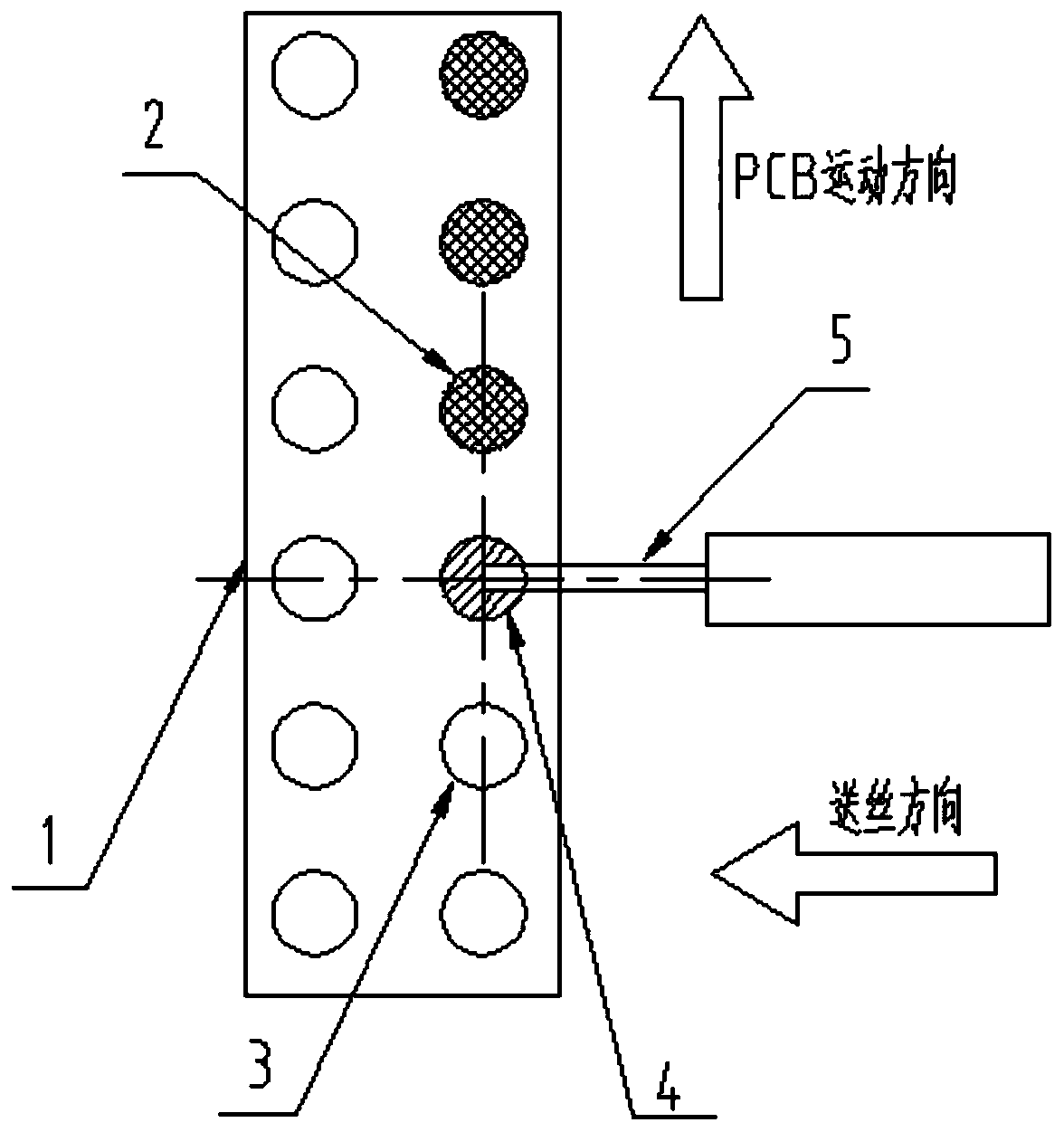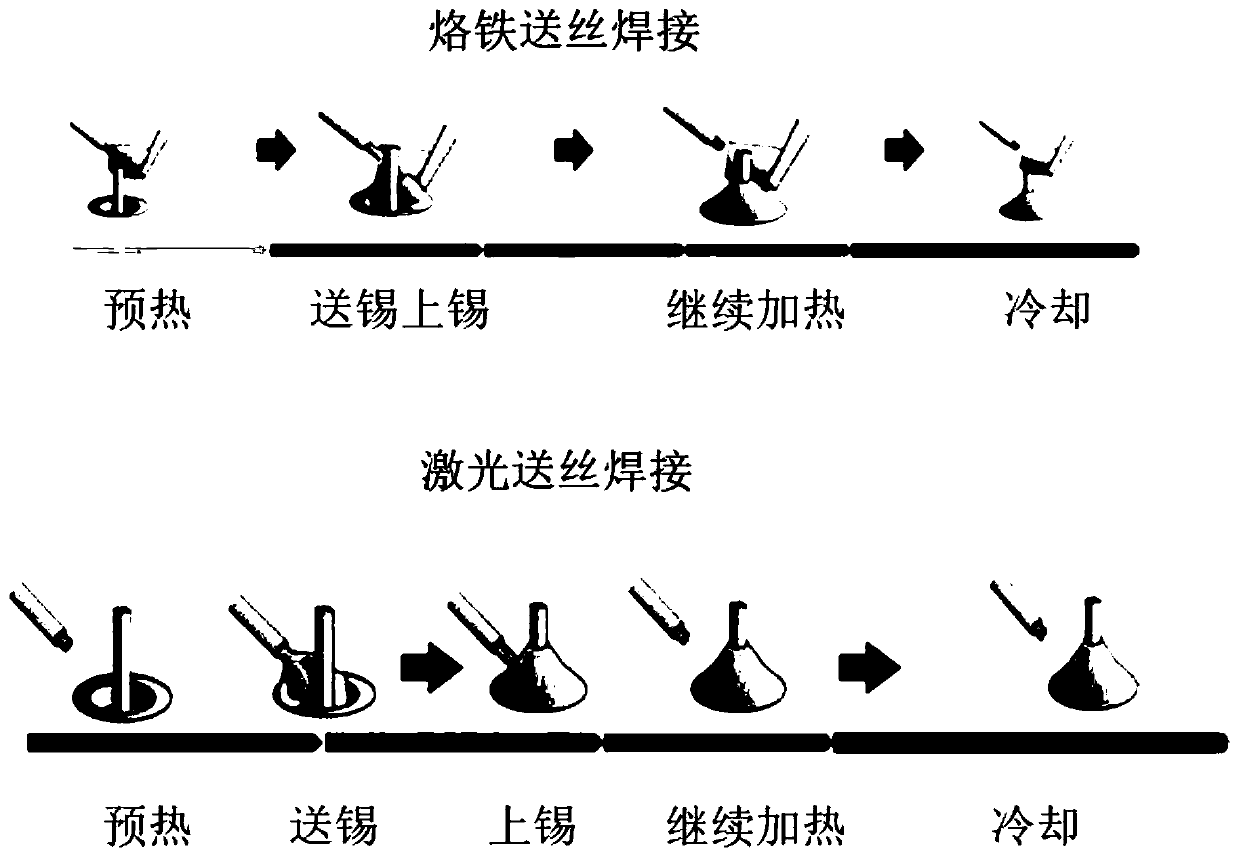Laser heating tin wire feeding drag welding process
A technology of laser heating and tin wire feeding, which is applied in tin feeding devices, metal processing equipment, electric heating devices, etc., can solve the problems of soldering iron tip wear, increased difficulty of automatic welding, and poor welding, so as to improve production efficiency and facilitate automation The effect of mass production
- Summary
- Abstract
- Description
- Claims
- Application Information
AI Technical Summary
Problems solved by technology
Method used
Image
Examples
Embodiment Construction
[0028] The technical solutions in the embodiments of the present invention will be further described below in conjunction with the embodiments of the present invention and the accompanying drawings.
[0029] The laser heating tin wire drag welding process of the present invention adopts the laser tin wire welding equipment in the prior art. This equipment is usually used as single-point welding. After a large number of experiments and skills have been mastered, it can be used to realize the laser drag welding process of the present invention. The specific operation steps are as follows:
[0030] The first step is to adjust the size of the laser focus on the device to match the size of the solder joints that need to be welded. During implementation, the diameter of the laser focus ranges from 0.3 mm to 2.0 mm. Within this range, the laser energy can well correspond to tin wires 5 of different diameters. If the spot is too small, it is easy to burn the pad 1. If the spot is too ...
PUM
| Property | Measurement | Unit |
|---|---|---|
| diameter | aaaaa | aaaaa |
| diameter | aaaaa | aaaaa |
Abstract
Description
Claims
Application Information
 Login to view more
Login to view more - R&D Engineer
- R&D Manager
- IP Professional
- Industry Leading Data Capabilities
- Powerful AI technology
- Patent DNA Extraction
Browse by: Latest US Patents, China's latest patents, Technical Efficacy Thesaurus, Application Domain, Technology Topic.
© 2024 PatSnap. All rights reserved.Legal|Privacy policy|Modern Slavery Act Transparency Statement|Sitemap



